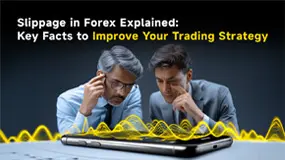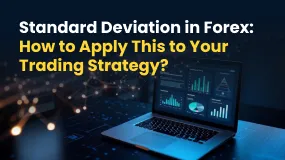简体中文
繁體中文
English
Pусский
日本語
ภาษาไทย
Tiếng Việt
Bahasa Indonesia
Español
हिन्दी
Filippiiniläinen
Français
Deutsch
Português
Türkçe
한국어
العربية
Top risk management strategies in forex trading
Abstract:Volatility within the FX market presents a range of opportunities for profit, but this also comes with added risk. Learn about the risks associated with forex trading, and find out how to manage them.

Volatility within the FX market presents a range of opportunities for profit, but this also comes with added risk. Learn about the risks associated with forex trading, and find out how to manage them.
The biggest risk in Forex is brokers scamming their clients. Everyday brokers scam their clients in a totally legal and obvious manner. WikiFX helps clients fight back and take back the power. WikiFX fishes the scammers out of the honest and trustworthy brokers. The app allows you to rate and review the brokers validity and customer reviews. Fight the scammers and download WikiFX today.
What is risk management in forex?
Through the use of a set of guidelines and safety precautions, you can handle any unfavorable effects of a forex trading. Since it's preferable to have a risk management plan in place before you actually start trading, an effective approach necessitates careful preparation from the beginning.
What are the dangers of trading forex?
When currency values fluctuate, there is a danger that the cost of purchasing foreign assets may increase or decrease.
Interest rate risk is the risk associated with an abrupt change in interest rates, which has an impact on volatility. FX prices are impacted by changes in interest rates because, depending on the direction of the shift, the amount of investment and expenditure will either rise or fall across an economy.
The danger of not being able to buy or sell an asset quickly enough to stop a loss is known as liquidity risk. Despite the fact that the foreign exchange market is quite liquid, there may still be times when it is less so, depending on the currency and the government's foreign exchange regulations.
When trading on margin, there is a danger of amplified losses known as leverage risk. Because the initial investment is less than the value of the FX deal, it is simple to overlook the amount of money you are risking.
How to control risk while trading currencies
Recognize the FX market
learn about leverage
Make a solid trading strategy.
Decide on a risk/reward ratio.
Use boundaries and stops
Control your feelings
Observe current affairs and news
Begin with a practice account.
Recognize the FX market
The currencies that make up the forex market are GBP, USD, JPY, AUD, CHF, and ZAR. Foreign exchange, or forex, is largely influenced by the dynamics of supply and demand.
Forex trading operates similarly to other exchanges in that you purchase an asset with a currency, and the market price indicates how much of one currency you must pay to purchase another.
The base currency is the first currency that appears in a forex pair quotation, while the quote currency is the second. The price shown on a chart is always the quote currency; it shows how much of the quote currency is required to buy one unit of the base currency. For instance, if the GBP/USD exchange rate is 1.25, that indicates that buying £1 would cost you $1.25.
The FX market is divided into three categories:
Spot market: A currency pair is physically exchanged at the precise moment the deal is finalized, or “on the spot.”
Forward market: a contract to purchase or sell a predetermined amount of a currency at a predetermined price, at a predetermined date in the future, or at any time in the future.
A contract to purchase or sell a specific quantity of a currency at a specific price and date in the future is known as a futures contract. A futures contract, in contrast to forwards, is legally binding.
Learn all there is to know about the foreign exchange market.
learn about leverage
You will be trading with leverage when you use CFDs to speculate on changes in the FX price. As a result, you may have complete market exposure with just a tiny initial margin investment.
Leveraged trading provides advantages, but there are also possible drawbacks, such as the risk for amplified losses.
Consider that you choose to trade the GBP/USD pair using CFDs. The pair is now trading at $1.22485, with buy and sell prices of $1.22490 and $1.22480, respectively. You choose to purchase a micro GBP/USD contract at $1.22490 because you believe that the pound is poised to appreciate versus the US dollar.
Purchasing a single small GBP/USD CFD in this instance equates to exchanging £10,000. for $12,249. You choose to invest $30,747 (£30,000) in three CFDs, giving you a total position size. However, because you're employing leverage to trade the currency pair, your margin will be 3.33%, or $1223.67 (£990).
Make a solid trading strategy.
By serving as your own instrument for decision-making, a trading strategy can facilitate FX trading. Additionally, it might assist you in keeping your composure in the tumultuous currency market. This strategy's goal is to provide answers to crucial queries including what, when, why, and how much to trade.
It is crucial that your forex trading strategy reflect your unique personality. Copies of other people's plans are useless since other people very certainly have distinct objectives, attitudes, and conceptions. They'll almost definitely also have a varied budget and time constraints when it comes to trading.
A trading diary is another tool you can use to keep record of everything that happens when you trade – from your entry and exit points, to your emotional state at the time.
Set a risk-reward ratio
In every trade, the risk you take with your capital should be worthwhile. Ideally, you want your profit to outweigh your losses – making money in the long run, even if you lose on individual trades. As part of your forex trading plan, you should set your risk-reward ratio to quantify the worth of a trade.
Compare the amount of money you're risking on an FX deal to the possible gain to determine the ratio. The risk-reward ratio, for instance, is 1:3 if the greatest possible loss (risk) on a trade is £200 and the maximum possible gain is £600. Therefore, even though you were only correct 30% of the time, you would have profited £400 if you made ten transactions using this ratio and were successful on just three of them.


Use restrictions and stops
It is crucial to choose your trade's entry and exit points before you establish a position because the FX market is notoriously unpredictable. To do this, use a variety of stops and limits:
Normal stops will automatically close your trade if the market goes against you. But there is no assurance against slippage.
With guaranteed stops, there is never a chance of slippage because they are always closed off at the precise price you selected.
When prices rise, trailing stops will follow and close your position if the market declines.
When the price reaches your selected level, limit orders will close your trade and follow your profit objective.
Control your feelings
The FX market's volatility may also wreck havoc on your emotions, and if there's one thing that determines whether or not a transaction is successful, it's you. Fear, greed, temptation, uncertainty, and worry are just a few of the emotions that may persuade you to trade or impair your judgment. In any case, it could affect the results of your transactions if your emotions interfere with your ability to make decisions.
Observe current affairs and news
It can be challenging to forecast how the prices of currency pairings will change since there are so many potential triggers for market volatility. Keep a watch on central bank actions and statements, political events, and market sentiment to make sure you're not caught off guard.
Summary of forex risk management
You will have more influence over your gains and losses if your risk management plan is exceptionally successful. WikiFX provides the clients with all the brokers information to prevent any scams from taking place. The WikiFX app is downloadable on the app store and play store.

Disclaimer:
The views in this article only represent the author's personal views, and do not constitute investment advice on this platform. This platform does not guarantee the accuracy, completeness and timeliness of the information in the article, and will not be liable for any loss caused by the use of or reliance on the information in the article.
Read more

A Guide to Determining the Optimum Forex Leverage
Want to gain a wider forex market position control by investing a minimal amount? Consider using leverage in forex. It implies using borrowed funds to raise your trading position more than your cash balance can let you do it. Forex traders usually employ leverage to churn out profits from relatively small currency pair price changes. However, there is a double-edged sword with leverage since it can multiply profits as well as losses. Therefore, using leverage in the right amount is key for traders. Forex market leverage can be 50:1 to 100:1 or more, which remains significantly greater than the 2: leverage usually offered in equities and 15:1 leverage in futures.

Slippage in Forex Explained: Key Facts to Improve Your Trading Strategy
Have you witnessed a difference between the expected price of a trade and the price at which it is executed in real time? This might be due to slippage, which can happen at any time. However, it prevails mostly when the market remains highly volatile. At the same time, it can also happen during large order executions. Read on to know more about slippage, its impacts, and the strategies to rein in adverse effects.

Forex Trading Account Types and Their Features: Read This Insightful Guide
Want to open a forex account to enjoy the thrill of compounding returns? You should first know the various forex trading account types. Choosing the right option from the list of forex accounts is critical to experiencing a hassle-free and successful trading journey. Forex brokers design trading accounts based on your needs, trading experience, and financial goals. Therefore, understanding each forex trading account type and its key features becomes essential.. This will help you make the right choice. In this article, we have discussed everything about forex accounts. Take a look!

Standard Deviation in Forex: How to Apply This to Your Trading Strategy?
Do you recall the concept of standard deviation being taught in your school days? The concept, which measures the variation within a set of data points relative to the mean average of the dataset. A greater standard deviation hints at higher variability. On the other hand, a lower standard deviation means lower variability from the mean. But what is standard deviation in forex, and how can you apply it to your trading strategy? This is what we will discuss here.
WikiFX Broker
Latest News
Consob Targets Political Deepfake “Clone Sites” and Unlicensed Platforms in Latest Enforcement Round
WikiEXPO Global Expert Interviews: Gustavo Antonio Montero: ESG in Finance
Global Guide to Finding Forex IBs/Brokers — Share Your Pick and Win Big!
Trump tariffs are helping drive U.S. beef prices to new highs
Mitrade Arabic Platform Targets MENA Gold Trading Boom
Israeli Arrested in Rome Over €50M Forex Scam
Scam Alert: GINKGO-my.com is Draining Millions from Malaysians!
New FCA Consumer Alert 2025: Important Warning for All Consumers
EmiraX Markets Withdrawal Issues Exposed
Trading Pro Review: Scam Broker Exposed
Currency Calculator



